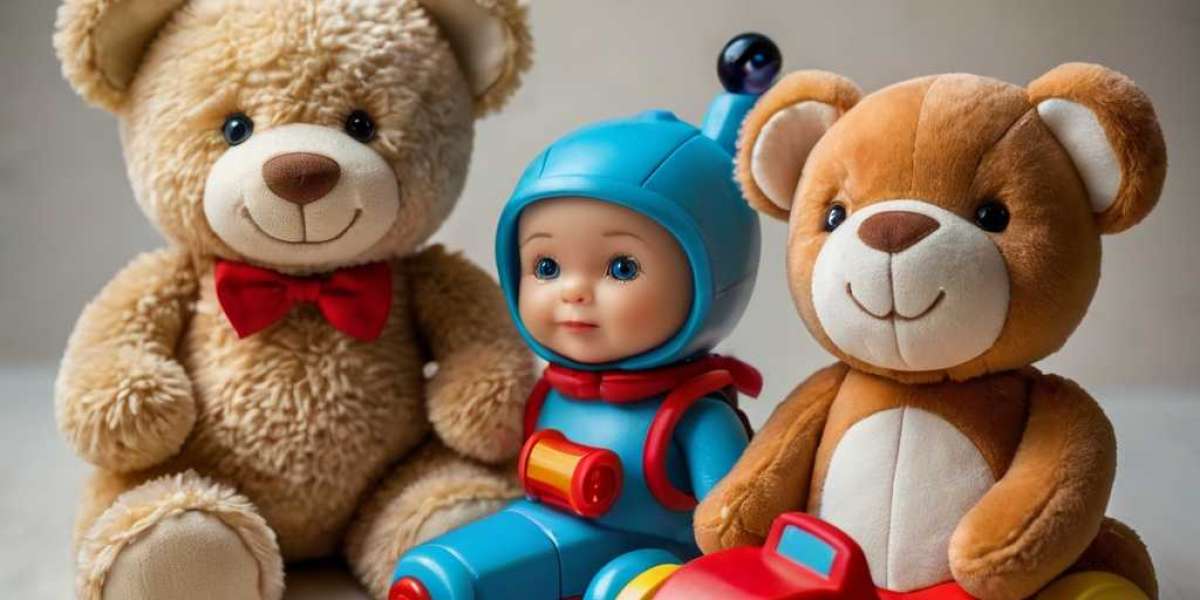In recent years, the retail industry has undergone a significant transformation, driven primarily by the growth of e-commerce and advancements in technology. One of the most impactful trends reshaping online shopping is the use of 3D product modeling. This innovative approach allows customers to interact with products in a virtual space, providing a more immersive and engaging shopping experience. In this blog post, we’ll explore the future of retail through the lens of 3D product modeling, discussing its benefits, applications, and how it’s likely to evolve. We'll also touch on the connection between 3D product modeling and 3D animated logos, which are becoming increasingly relevant in branding.
The Rise of 3D Product Modeling in E-commerce
E-commerce has become a vital component of the retail industry, with businesses expanding their digital presence to reach customers globally. However, one challenge has been the inability to replicate the tactile experience of in-store shopping. Traditional product images and videos, while helpful, often fall short of giving customers a comprehensive view of the item. This is where 3D product modeling comes into play.
What is 3D Product Modeling?
3D product modeling is the process of creating three-dimensional digital representations of products. These models can be viewed from all angles and manipulated in real time, giving customers the ability to explore every detail of a product as if they were holding it in their hands. The models can include textures, colors, and features that are true to the actual product, providing a hyper-realistic and immersive experience.
This technology bridges the gap between physical and digital shopping, offering a solution that enhances customer confidence and satisfaction. Shoppers can now zoom in, rotate, and interact with products, gaining a better understanding of their features, dimensions, and quality. Such an interactive experience leads to a more informed purchase decision, reducing the likelihood of returns.
The Impact of 3D Product Modeling on Customer Experience
The integration of 3D product modeling in online shopping has numerous benefits for both consumers and retailers:
Enhanced Product Visualization: Shoppers can view products from every angle and zoom in on details that might be overlooked in standard images. This interactive experience is particularly valuable for complex or high-value items such as electronics, furniture, and fashion, where customers want to inspect quality and design closely.
Reduced Returns: A major issue for online retailers is the high rate of product returns, often due to discrepancies between the product as seen online and as received. 3D modeling minimizes these discrepancies, providing an accurate representation that helps customers make better-informed decisions, thus reducing return rates.
Increased Engagement: 3D product models keep customers engaged for longer periods, increasing the chances of completing a purchase. When shoppers can interact with a product, they are more likely to feel confident and satisfied with their choice.
Customization Options: One of the most exciting applications of 3D product modeling is the ability to customize products in real-time. Whether it’s changing colors, materials, or adding personalized details, customers can see exactly how their customizations will look before they buy.
Applications of 3D Product Modeling in Different Retail Sectors
The adoption of 3D product modeling varies across industries, but some sectors are leveraging its capabilities to transform the shopping experience.
1. Fashion and Apparel
For fashion retailers, the use of 3D modeling allows customers to see how clothes fit and move on virtual models that match their body type. Some brands are even experimenting with virtual try-on technology, enabling shoppers to visualize how garments would look on their own bodies. This level of personalization is driving higher conversion rates and improving customer satisfaction.
2. Furniture and Home Decor
Furniture and home decor retailers benefit immensely from 3D product modeling. Customers can visualize how a sofa, table, or decor item will look in their space using augmented reality (AR) tools that integrate with 3D models. By placing digital representations of products in their actual rooms, shoppers get a realistic sense of scale, color, and aesthetics, which helps in making confident purchase decisions.
3. Electronics and Gadgets
For tech-savvy consumers, being able to explore the intricate details of gadgets like smartphones, laptops, and gaming consoles is crucial. 3D product modeling allows online shoppers to inspect buttons, ports, and features closely, giving them confidence in the product's quality. It also aids in explaining complex features through interactive animations.
4. Automotive Industry
In the automotive sector, 3D product modeling is used to create virtual showrooms where customers can explore vehicles in great detail. Shoppers can customize colors, interior materials, and even test how certain features look and work. These virtual experiences are becoming increasingly important as more car sales move online.
The Role of 3D Animated Logos in Enhancing Retail Branding
In addition to product visualization, branding plays a crucial role in the online shopping experience. One emerging trend is the use of 3D animated logos as part of a company’s digital identity. These logos are dynamic and interactive, capturing attention and enhancing brand recognition.
Why 3D Animated Logos Matter in E-commerce
A 3D animated logo is more than just a visual element; it’s a storytelling tool that conveys the brand’s message and values. Incorporating such logos into online platforms can:
Enhance Brand Identity: A well-designed animated logo can showcase the essence of a brand, making it memorable and recognizable. For retailers, this is vital in differentiating themselves from competitors in a crowded online market.
Engage Customers: Animated logos add a dynamic element to e-commerce websites, grabbing the user’s attention as they navigate through the platform. This engagement can lead to higher customer retention and improved brand loyalty.
Reflect Technological Innovation: Brands that use 3D animated logos signal that they are modern and tech-savvy, aligning themselves with the cutting-edge capabilities of 3D product modeling. It reinforces the message that the brand embraces innovative solutions to enhance customer experience.
How 3D Product Modeling and 3D Animated Logos Work Together
Integrating 3D product modeling and 3D animated logos creates a cohesive and immersive brand experience. For instance, a retailer can introduce their products with a brief animation of their logo, setting the tone for the interactive journey that follows. The seamless transition from logo animation to product exploration makes the entire shopping process engaging, captivating the shopper from start to finish.
The Future of 3D Product Modeling in Online Shopping
As technology advances, the future of 3D product modeling in retail looks promising. Here are some trends and developments to watch:
1. Augmented and Virtual Reality Integration
AR and VR technologies are becoming more accessible, and their integration with 3D product modeling is inevitable. AR allows customers to visualize products in their own environment through their smartphones, while VR can provide a fully immersive virtual shopping experience. Imagine entering a virtual store, browsing aisles, and interacting with products in 3D—these technologies are set to revolutionize the way we shop online.
2. Artificial Intelligence (AI) and Automation
AI will play a significant role in automating the creation and customization of 3D models. With AI algorithms, retailers can generate realistic product models from simple images or CAD files, saving time and resources. AI-powered recommendations can also enhance the shopping experience by suggesting products based on customer preferences and behavior.
3. Personalized Shopping Experiences
As customers expect more personalization in their shopping journeys, 3D product modeling will evolve to meet these demands. Personalized 3D avatars, virtual fitting rooms, and customizable products will become standard features, allowing shoppers to create and visualize their own versions of products in real time.
4. Integration with Blockchain for Authenticity
With the rise of counterfeit products in e-commerce, retailers may turn to blockchain technology to verify the authenticity of their 3D models. Blockchain can provide a transparent record of a product’s design and production, ensuring that the digital model corresponds to the original and is not tampered with.
5. Sustainability and Digital Twins
As sustainability becomes a priority, retailers may adopt digital twins—3D replicas of products that track the lifecycle and environmental impact of an item. These digital twins can provide customers with detailed information on a product’s carbon footprint, material sourcing, and durability, promoting sustainable shopping practices.
Conclusion
The future of retail is undoubtedly intertwined with 3D product modeling. This technology not only enhances the online shopping experience but also paves the way for greater personalization, engagement, and trust between retailers and consumers. As the digital marketplace evolves, the integration of 3D animated logos and immersive product visualization tools will become standard practices, further transforming the e-commerce landscape.
Embracing these technologies early can give retailers a competitive edge, allowing them to build stronger connections with their customers and create a shopping experience that’s not just convenient but also captivating. As we move forward, 3D product modeling will be a cornerstone of digital retail, reshaping how consumers interact with brands and products online.

